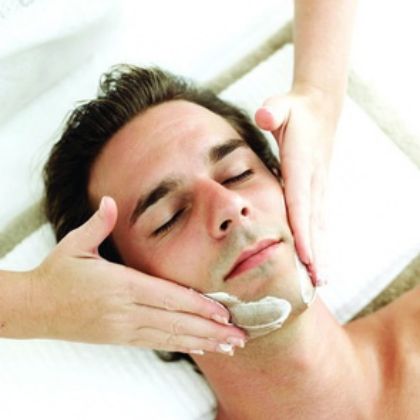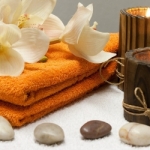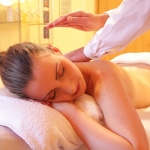Spa Therapist Salary: What should a spa therapist be paid?
Despite the lack of standard base salary, U.S. therapists earn the most worldwide.
 Therapists in the U.S. are the best paid in the world and can earn up to US$4,166 (€3,100, £2,700) a month. Meanwhile their counterparts in Malaysia, with the worst salaries, only bring in US$308 (€231, £200). These were the findings of Real Numbers on Esthetician Compensation, a report published by leading industry body the Global Spa & Wellness Summit (GSWS) in April. One of the first analyses on global therapist pay, it marked the debut of the GSWS’s Metric Minutes – compilations of anonymously-sourced, industry data and stakeholder interviews that are designed to “simply start the conversation”.
Therapists in the U.S. are the best paid in the world and can earn up to US$4,166 (€3,100, £2,700) a month. Meanwhile their counterparts in Malaysia, with the worst salaries, only bring in US$308 (€231, £200). These were the findings of Real Numbers on Esthetician Compensation, a report published by leading industry body the Global Spa & Wellness Summit (GSWS) in April. One of the first analyses on global therapist pay, it marked the debut of the GSWS’s Metric Minutes – compilations of anonymously-sourced, industry data and stakeholder interviews that are designed to “simply start the conversation”.
Here, the GSWS has updated its findings to provide a snapshot of how aestheticians are paid in a selection of different countries – and the reasons why salaries vary so widely. The overview is intended to help operators and owners learn more about how our industry makes money (and in some cases does not).
On commission
Whether cultural, regulatory, or just habit, different countries pay beauty therapists in very different ways. Even taking into account the cost of living from one place to another, there are still major variances in average monthly pay.
In a large number of countries, the standard method of pay for beauty therapists is a monthly salary. Although, as shown in the table, there doesn’t appear to be any rhyme or reason to the amount of the salary. In almost every country, except for in the U.S., the salary makes up the lion’s share of monthly income, with commissions on services or retail comprising the rest. Service commissions are typically 5-10 percent of the cost of the treatment provided and are added to the monthly base salary.
In the U.S., however, it’s quite common for beauty therapists in day spas – which make up the vast majority of country’s spa establishments – to receive absolutely no base salary, earning all of their income as a commission on the treatment prices charged by the business. While this sounds unfair and quixotic, the result is that American therapists are the most highly paid in the world.
The U.S. also provides the biggest variety of pay plans which vary between states and cities or even two businesses in the same block. As there is no one-way things are done, methods of pay can be quite creative. Rather than paying a straight percentage for all therapists, for example, operators could offer more compensation to those who reach set benchmarks – such as better client retention rates and average customer spend – that help drive business. Alternatively, they can vary the percentage of compensation according to different services: paying less for treatments where a high amount has been spent on pieces of equipment, for example, to get a quicker return on investment. Slowly and incrementally, this is helping to offset the high staff overhead that U.S. spas face.
Retail commission – where therapists get a percentage of revenue from products they sell – is another possible add-on for salaries as spas all over the world offer products for home use. Globally, retail commission levels are fairly consistent at 5-10 percent of the retail price, which is typically all a business can afford on branded merchandise that already has high markup costs.
Benefits and taxes
Every country also has its own legal and cultural requirements for employers paying therapists concerning issues such as health insurance, retirement/pensions, and other social service benefits. The costs vary widely also, from an approximate 11 percent of payroll in the U.S. to as much as 40 percent in Sweden. It’s certainly incumbent on any spa business opening in a new country to fully understand all the different taxes and benefits that its expected to pay in addition to service provider salaries.
There’s no correlation between a therapist’s education and pay. Some countries require licensing for beauty therapy which typically involves up to two years of study. Meanwhile, in the U.S. an aesthetics license can be earned in many states in four months of full-time schooling; and there are still many countries, such as China, South Africa, Cambodia, the Philippines, and Brazil, where no license is required at all. However, the countries with the highest education costs are not those that pay the most. This could be a false economy – while an operator could potentially save money by hiring unlicensed therapists, the spa may develop a less desirable reputation, and incur additional in-house training costs as a result.
Something that is standard internationally is workers typically receiving 21 to 28 days of paid holiday a year. In China and Hong Kong, staff gets an extra months’ pay for Chinese New Year, along with two weeks off. That said, many global workers put in a lot of time and effort to earn such benefits – regularly putting in a six-day workweek, and in some resorts or on cruise ships working daily for two to three weeks before taking a day off.
In the U.S., paid time off is less generous: small spas will provide no paid leave, while spas that are part of larger brands will offer a week off after a year of employment, and that may increase to two weeks after two or three years of steady employment. Therapist schedules are also becoming shorter, often three to four days per week and part-time shifts are becoming more frequent as mandated health-care costs for full-time workers increase.
Growing concerns
Staff pay is, in most markets, the single biggest expense in spa business operations. This makes sense, as the inherent strength of spas is a labor-intensive product. But as companies continue to expand, and brands proliferate across country regions and borders, spa management teams should be aware of the differing pay, benefit and tax conventions. It’s not safe to assume that “what you’ve always done” in one country will be accepted in another, and this makes projecting turnover and profits more complex.
It’s no surprise that countries which pay the least in direct salary also have the lowest cost of living, however, this may also be a reflection of the importance of personal care to a specific locale or region, or the value placed on overall health and appearance. Spa services sit right at the crossroads of beauty services and healthcare, and in most countries spas are attracting increasing numbers of practitioners, who deserve the right to a fair living wage. But in situations where the desired pay is outsized compared to other overheads, it can make the ability for a business to earn a profit almost impossible, and negatively impact the growth potential for the industry as a whole.
If you have questions about spa employee pay and how to find what works for your business and your team, give us a call. Schedule a free 30-minute needs assessment here.
This article was originally published in Spa Business Magazine and on the Spa Business blog.





Leave a Reply
Want to join the discussion?Feel free to contribute!